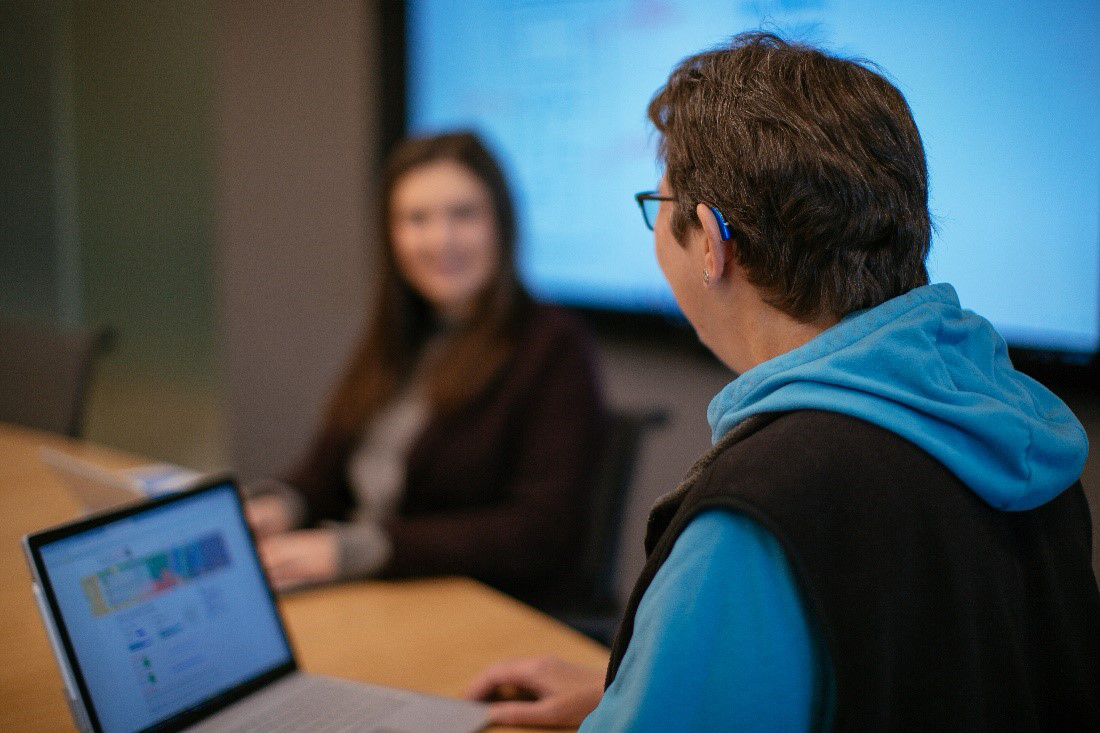Language and Etiquette
Person-first language and identity-first language
Our words can hold much power. Our hope is that positive language around disability will help people to be more inclusive.
Microsoft recommends using people-first language whenever possible, such as "a person with a disability" or "a person with a vision disability" rather than "a disabled person" or "a visually impaired person." Avoid outdated or offensive terms such as handicapped, retarded, mute, or wheelchair bound.
While we recommend people-first language as a best practice, individuals may have different preferences. Some people prefer to use identity-first language to describe themselves, such as "autistic person" rather than "person with autism." If you're corrected by someone or make a mistake, accept it, ask for suggestions to fix it, and move on.
Interacting with a person who has a disability
How you act tells people who you are and what you think of them. Regardless of whether you know someone has a disability or not, treat the person with respect and include them in your conversations, meetings, and events.
Speak to the person
If you're in a meeting and one of the attendees is blind and asks a question, look directly at the person who is blind when answering the question, not just the sighted people around them.

Disability etiquette
Treating people with disabilities with respect is about more than the language you use. Here are some important tips for interacting with people with disabilities in an appropriate and respectful way.
We can briefly summarize these tips as follows:
- Make eye contact
- Don't touch
- Announce yourself
- Make documents accessible
Nothing about us without us
Include people with disabilities from the beginning of every planning process.
This mantra "reinforces the role of people without disabilities as strong allies and partners who share the role towards inclusivity and accessibility."*
*Huffington Post: "Nothing About Us Without Us"
Make eye contact
A person who is deaf might have a sign-language interpreter. Ensure that you speak directly to the person when you're talking, not the interpreter.

Don't touch
Never touch assistive tools such as wheelchairs, guide dogs, canes, or phones. Don't touch or grab a person. When collaborating with someone who has a disability, if something isn't working on their device, don't just take it; ask if you can try troubleshooting it yourself.
Announce yourself
If a person has low vision or is blind, announce yourself when you walk by or enter a meeting; nothing long, just a simple, "Hi Joe, it's Mary. How was your weekend?" works great. Also, when you're ending or leaving a conversation, make sure to announce you're walking away.
Make documents accessible
Make all of your electronic files, like Word documents and PowerPoint presentations, accessible. Even if you only intend to share that beautiful presentation with a person who you know is sighted, it might wind up getting reviewed by someone who isn't. Or, you might have spent thousands of dollars on a fancy video promoting a new feature of your product. Be sure to include closed captions so people who are deaf or hard of hearing—or even people who can hear but are in a noisy environment—can experience the great video you produced.